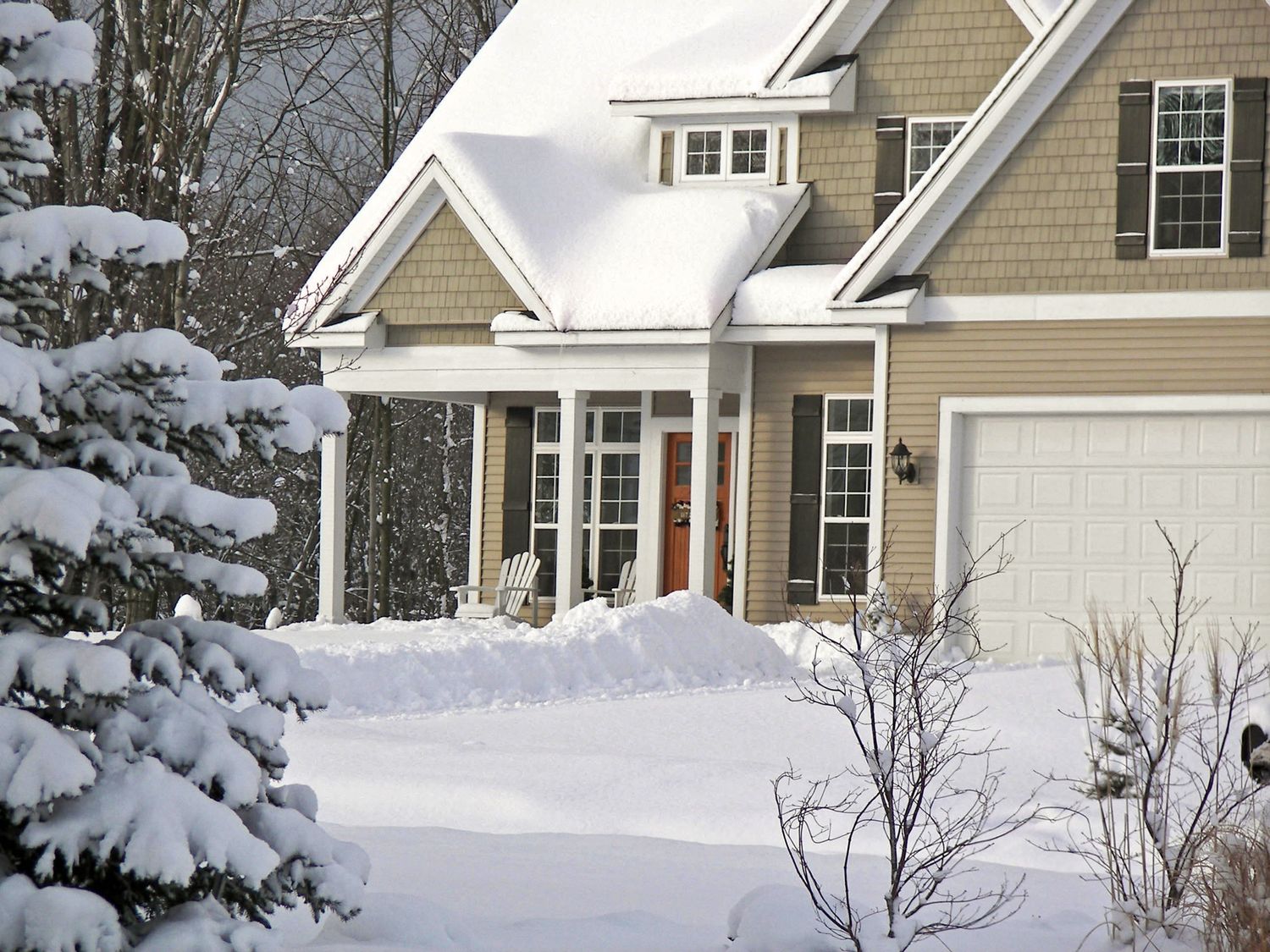To borrow a phrase from Forrest Gump, winter in Indiana is “like a box of chocolates; you never know what you’re going to get.” Recently, we’ve had some fairly mild winters, but no one who was alive in 1978 will forget that storm. So even though we’re almost through January, it’s still a good idea to brush up on some winter home maintenance and safety tips.
Reverse your ceiling fans.
This one is easy. If you haven’t done so already, check to see if your fan has a switch that allows you to reverse the direction the blades move (from counterclockwise to clockwise). This will pull air up—which then pushes the warmer air near your ceiling (warm air naturally rises) down, saving you energy. Especially in rooms with high ceilings, it might allow you to lower your thermostat a degree or two.



Prevent frozen pipes.
Because water expands when it freezes, pipes that freeze can burst and cause extensive damage. When temperatures drop to the single digits, you may want to take steps to protect your pipes—especially if they are on an outside wall.
- Insulate them by wrapping towels or newspaper around the pipes.
- If the pipes are behind a cabinet door, leave the door open overnight so heated air can reach it.
- Leave a thin stream of water running overnight. The theory here is that moving water won’t freeze as quickly.
- If you are gone for several days, leave the thermostat set at least at 55.
Stay ahead of ice dams.
Ice dams can cause major damage to your roof and the ceilings and walls inside your home. They form when the edge of your roof is colder than the higher elevations (because there’s less insulation at the edge). As melting snow flows toward the eaves, it can refreeze when it contacts the colder shingles. This build up becomes a dam of ice which can damage the roof and leak into your home. One obvious solution is to inspect your attic insulation and add more if necessary. Another less costly option is to buy a roof rake (like this one from Amazon: https://www.amazon.com/Garant-GPRR24U-Yukon-24-Inch-Blade/dp/B000A16VS4?ref_=Oct_TopRatedC_3043491_0&pf_rd_p=66952ae2-83d2-5bc6-8b07-7ddbcd994306&pf_rd_s=merchandised-search-6&pf_rd_t=101&pf_rd_i=3043491&pf_rd_m=ATVPDKIKX0DER&pf_rd_r=2F049MKH021AKD8FHJJS&pf_rd_r=2F049MKH021AKD8FHJJS&pf_rd_p=66952ae2-83d2-5bc6-8b07-7ddbcd994306). After each snow, use the roof rake to move the snow off the edges of your roof so ice is less likely to accumulate there. Be careful not to damage your roof while you remove the snow.






Clean snow off sidewalks and driveways.
This is a no-brainer—and it can be a huge chore. Shoveling heavy snow is hard on your back and can put a strain on your heart. A snow blower is nice, but in Indiana there might be winters when you would use it weekly and other years when it might sit in your garage and never see the light of day. It’s a big investment that takes up a lot of room—and you might not use it very often. Check out wovel.com to watch a video of a snow wovel—a shovel with a wheel—that might be a better alternative.
Clean all of your heating systems.
If you have electric heat, have your unit serviced once a year to make sure it is working properly. If you have gas heat, have it checked every three years. Change your air filters regularly—once a month or so depending on the type of filter you buy and whether or not you have pets. (Pet hair can clog filters.) If you have a high efficiency heat system, be sure to keep your vent pipes free of snow and debris.
Have your chimney inspected and cleaned by a chimney sweep at least once a year to keep it free of creosote and animal nests and to check the structural integrity.




